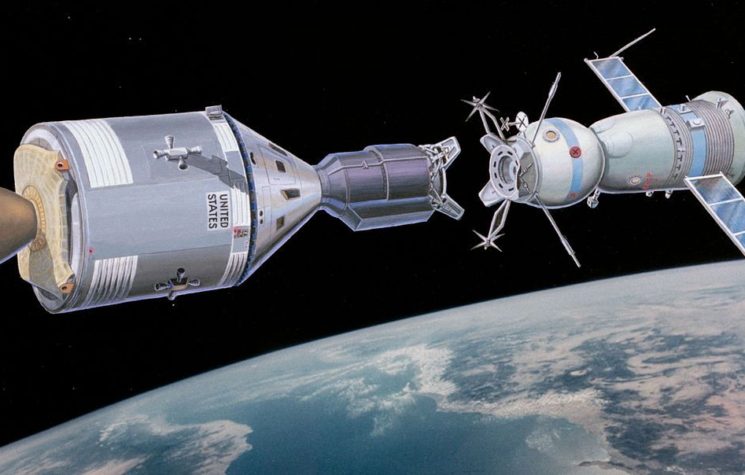Many of the breakthroughs in rocketry, space science and the atom which so profoundly altered the world during the 20th century happened within the unfortunate momentum generated by wars both hot and cold.
In these days of profound uncertainty, it is comforting knowing that certain fundamental truths still exist and serve as guiding lights through the dark waters.
Among the highest of those fundamental truths are those enunciated in 1967 by Reverend Martin Luther King who ruminated over the dangers of imperialism and nuclear war by stating “we still have a choice today: nonviolent co-existence or violent co-annihilation”.
When leaping ahead over five decades past the April 4, 1968 assassination of King to our present time, that truth stands as valid today as ever.
While asymmetric never-ending wars following the ‘Vietnam model’ have continued across the Middle East and while the world faces no shortage of modern Dr. Strangeloves giddy over the visceral power offered by the red button, humanity’s obligation to recognize the scientific truthfulness of King’s words have existential importance.
In the face of today’s lunge towards extinction, the Greater Eurasian Partnership and broader Belt and Road initiative spreading across the face of the globe has pulled more people out of poverty and despair at rates unseen in all history. Yet an under-appreciated aspect of this dynamic has taken the form of the ever-expanding “space silk road” which is what I’d like to discuss in this first of a two-part essay.
The Trans Geopolitical Roots of Space Exploration
Since the days of Jules Verne’s From the Earth to the Moon (1865), the dream of a new space-exploration driven age of mankind was something that animated the scientific imagination of the greatest minds of the 20th century. A generation of German rocket scientists inspired by Fritz Lang’s 1929 Frau Im Mond (Woman in the Moon) innovated new aerodynamic and chemical designs that began making the impossible possible. With every new breakthrough, the realm of ideas that Jules Verne could only dream of became ever more a part of the field of potential shaping humanity’s available pathways.
Imperial geopoliticians seeking to keep humankind locked within a closed system of diminishing returns and monopolized resources on the face of the earth were certainly nervous at the new age that was unfolding.
Like so many technological innovations in human history, many of the breakthroughs in rocketry, space science and the atom which so profoundly altered the world during the 20th century happened within the unfortunate momentum generated by wars both hot and cold. Today, many cynics who have drank heavily from the chalice of misanthropy, are quick to pounce on this unfortunate irony as proof that humanity only creates when we are busy killing each other. However, by changing our point of view a bit, we could just as easily conclude that this irony is proof that despite our frequent falls into barbarism (shaped more often than not by oligarchical interests manipulating nations into self-destruction), humanity has the power to create higher goodness even amidst strife. MLK put this in his own words when he said that “the arc of history is long but it bends towards justice”.
Is there a Scientific Case to be made for King’s Optimism?
While it is nice to hear such statements as those uttered by MLK, can we find evidence that this optimistic view of human nature stands on firmer ground than mere rhetoric?
I think there is.
For one thing, were the forces of evil truly more powerful than forces of good, than it stands to reason that the last 100,000+ years would have resulted in mankind either never having made it out of caves, or self-exterminating long ago, leaving the world a much better place in a state of “technology-free” balance.
And yet, here we are. Nearly nine billion members of our fragile species conglomerated on the face of our fragile planet spinning around a sun within a small neighborhood of a small galaxy amidst a cluster of galaxies which we have barely even begun to understand.

It was, after all, not long ago that humanity still believed that all observable spiral galaxies were contained within the confines of the Milky Way. It took the discoveries of Henrietta Swan Leavitt (1868-1921) in the early 20th century to prove that this was not true and that ours was but one of a multitude of galactic islands in the universe (1). It was at this time that breakthroughs in aviation were allowing humanity to finally construct primitive airplanes and breakthroughs in electromagnetism and radiation were expanding our understanding of the structure of space time far beyond the visible zone of light waves, many octaves into the domain of radio waves below infrared and above ultraviolet into shortwave x rays and gamma radiation. With each cognitive leap into the unknown, boundary conditions of our collective knowledge were increased in tandem with our potential carrying capacity as new technologies beneficial to sustaining more people at higher standards of living were made available.
Of course, giving the cynic his/her due, it must be admitted that with each conceptual advance of mind’s grasp of the forces of matter, our freedom to create was increased along with our freedom to destroy.

In 1926, the brilliant Russian biogeochemist Vladimir V.I. Vernadsky (1863-1945) recognized that the thing dubbed the biosphere was not a closed system of Darwinian objects competing in a universe of diminishing returns, but was itself a singular system whose identity was more than the sum of parts, driven by 1) photosynthesis (the power of living matter to transform solar energy into work) 2) a tendency towards increasing the flow of atomic migration of elements, 3) a principle of ubiquity of all life which tended to expand to its fullest and generate new “technologies” to constantly overcome nature’s limits to growth and was 4) the intersection of a multitude of octaves of cosmic radiation from intergalactic space with the lithosphere mediated by nested magnetic fields. The conception outlined in Vernadsky’s Biosphere was that living matter and ecosystems were not localized to the earth, but were rather cosmic processes tied to the entire environment of the solar system and beyond. This concept was not only new but irrefutable and revolutionary. (2)
In 1957, a new milestone was reached as Russia’s Sputnik I satellite broke into orbit and mankind officially became the first space-bound species on record. As humanity extended its sphere of activity beyond the limits of the biosphere, yet more incredible new discoveries were made, such as the existence of nested positively and negatively charged magnetic fields dubbed the Van Allen Belts that were a part of a structure of Birkland currents shaping pathways within electromagnetic fields that allowed fluxes of coronal mass ejections emerging from the sun, and even other stars, to flow into the earth’s biosphere, driving the flow of evolutionary activity over long periods of time.
Scientists across the world soon found themselves looking to these invisible nested arrays of magnetic fields within our galaxy and the dense ocean of cosmic radiation and plasma in order to seek the causes of weather, ice ages, viruses, volcanism, extinction cycles and more. Frank Capra’s 1959 The Strange Case of Cosmic Rays sponsored by Bell Labs provides a glimpse into the trajectory of scientific thinking at this time.
John F. Kennedy Takes the Helm
After Sputnik’s breakthrough, it didn’t take long for humans to follow suite with Yuri Gagarin’s orbital voyage on April 12, 1961. Amidst the fog of assassinations, coups, asymmetric wars and psy ops of the Cold War, space flight continued to offer humanity a pathway out of hell. Seeking desperately for a creative exit from the Game Theory-driven rules of Mutually Assured Destruction, President John F Kennedy embraced the strategic value of space not merely as a geopolitical tool to beat the commies, as is so often portrayed in history books, but as a driving force that could transform the world and the rigged rules of the Cold War. Kennedy’s September 20, 1963 United Nations speech championing the establishment of a joint U.S.-Russian space program is a testament of this strategic outlook which has been too easily forgotten over the years. Additionally, Kennedy made it clear that space exploration generated long term goals and intentions that would “serve to organize and measure the best of our energies and skills”. The stochastic idea of economics defined as “hedonistic beasts with money seeking to maximize their pleasure and reduce their pain while buying low and selling dear” which free marketeers and libertarians advocated could never stand up to this higher conception of capitalism as outlined by Kennedy and the best American System traditions.
Nuclear technology that also emerged in the fires of war similarly found itself forged into tools of creation as well as destruction.
As nuclear bombs were built at record speeds on both sides of the Iron Curtain, civilian nuclear reactors began producing abundant, high quality cheap energy at such rates that for the first time, billions of people could be alleviated from poverty forever. While Russia was less fortunate with her efforts on the Moon, she landed 10 probes on the surface of Venus during the 1961-1984 Venera program and began applying nuclear reactor technology to space craft eventually sending out 30 nuclear reactor units in 30 yeas. In the USA, Kennedy unveiled a program for nuclear rockets under the NERVA program, and Project Rover which promised to offer humanity a means of flying not only to the moon and mars but to the furthest reaches of the solar system and beyond. As the NERVA and Phoebus rockets passed all tests with flying colors (3), programs were outlined to begin Mars colonization with plans to land on the red planet by August 1982.
Even in China, Premier Zhou Enlai had ensured that space pioneer Qian Xuesen had received state support to create a Chinese space program which began in earnest with the 1958 Project 581 which aimed to put a satellite into orbit. Although suffering many setbacks throughout the 1960s-1980s, the Chinese resiliently pushed forward, eventually becoming the third nation to send astronauts into space through their own efforts.
Despite the intrigue and evil that dominated geopolitics these precarious years, the call of a new age of cooperation continued to resonate with milestone achievements as the 1967 Space Treaty, 1969 Moon landing, and Apollo Soyuz 1975 cooperation between U.S. and Russian space agencies.
So What Went Wrong?
So why did the Apollo Program, which had generated revolutionary technologies in every branch of economics and medicine find itself dissolved by 1973 and advanced Saturn rockets retired into museums? Why were Kennedy’s offers to the Soviet Union dropped upon his death despite the fact that Khrushchev wrote of his desires that they happen? Why did NASA’s budget peak in 1964 maxing at 4% of GDP and find its funding drained into the war in Vietnam, never to rise again? Why were the nuclear rocket programs dismantled in 1972 despite having beaten all expectations? Why did the Apollo-Soyuz program fail to serve as the foundation for a new era of space diplomacy?

As I outlined in my previous article on The Dynamics of Nuclear Diplomacy, the answer to this strange set of anomalies is found in the rise of a new breed of misanthropic statecraft called “neo-Malthusianism” which took the levers of western foreign and internal economic policies over the dead bodies of pro-development leaders like Kennedy, Enrico Mattei, Dag Hammarskjold, Daniel Johnson Sr., Bobby Kennedy and Martin Luther King Jr. As the neo-Malthusian revolution was effected across western governments during this period, studies such as Limits To Growth began to promote a new wisdom of degrowth and conservation of ecosystems as a replacement for the “old wisdom” that cherished big infrastructure projects and scientific discovery as the driving ethic of humanity. “Ecosystems” under this new age of digital computer modelling were increasingly defined as closed, thermodynamic processes bounded by mathematical homeostasis, and humanity was expected to adapt to those supposed limits like any other beast within nature.
One of the founders of the Canadian branch of the Club of Rome was Maurice Lamontagne (former President of the Privy Council Office) who called out the problem of creativity itself in his 1968-1972 Science Policy Senate Reports:
“Nature imposes definite constraints on technology itself and if man persists in ignoring them the net effect of his action in the long run can be to reduce rather than to increase nature’s potential as a provider of resources and habitable space… But then, an obvious question arises: How can we stop man’s creativeness?”
Calling for a redirection of funding from science and discovery which had the troubling effect of increasing humanity’s power over nature and thus disrupting the mathematical equilibrium which Malthusian computer models demanded govern all reality, Lamontagne stated:
“The new wisdom prescribes that the additional R&D effort be devoted to the life sciences and social sciences rather than the physical sciences… to economic and social objectives rather than curiosity and discovery.”
The 1970s-1990s saw the largest onslaught on all domains of science policy that involved discoveries into the universe of the immeasurably large (space science) and immeasurably small (atomic science) which threatened to disrupt the formulas for population limits that the new breed of neo-Malthusian craved in their quest for total power under a New World Order.
In the next installment, we will review China’s re-activation of space exploration as a creative flanking maneuver to break humanity out of the rigged fixed rules of the Great Game while also reviving the dream of attaching our destiny to the infinite.
The author can be reached via his Substack account.











































